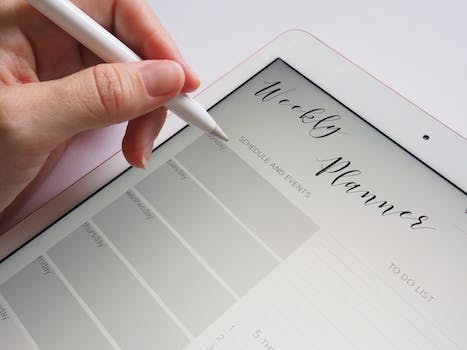How To Start A Business Email Conversation
“Crafting the perfect opening line for successful business communication.”
Introduction
When starting a business email conversation, it is important to make a good first impression. The introduction sets the tone for the rest of the conversation and can determine whether or not the recipient will continue reading. In this article, we will discuss some tips on how to start a business email conversation effectively.
Crafting the Perfect Subject Line for Your Business Email
Starting a business email conversation can be a daunting task, especially if you’re not sure how to craft the perfect subject line. The subject line is the first thing your recipient will see, and it can make or break whether they open your email or not. In this article, we’ll discuss some tips and tricks for crafting the perfect subject line for your business email.
First and foremost, keep it short and sweet. Your subject line should be no more than 50 characters, as anything longer than that can get cut off on mobile devices. You want to make sure your recipient can read the entire subject line without having to click on the email. Additionally, shorter subject lines tend to be more attention-grabbing and memorable.
Next, make it clear and concise. Your subject line should clearly convey the purpose of your email. Avoid using vague or generic subject lines like “Hello” or “Important Information.” Instead, use specific language that tells your recipient exactly what your email is about. For example, if you’re following up on a job application, your subject line could be “Job Application Follow-Up.”
Another tip is to personalize your subject line. Use your recipient’s name or company name in the subject line to make it more personal and relevant to them. This can help increase the chances of your email being opened and read. For example, if you’re reaching out to a potential client, your subject line could be “Opportunities for [Company Name].”
Additionally, consider using action-oriented language in your subject line. This can help create a sense of urgency and encourage your recipient to take action. For example, if you’re promoting a sale, your subject line could be “Last Chance to Save 20%.”
It’s also important to avoid using all caps or excessive punctuation in your subject line. This can come across as unprofessional and spammy. Stick to proper capitalization and punctuation to ensure your email looks polished and legitimate.
Lastly, consider testing different subject lines to see what works best. You can use A/B testing to send two different subject lines to a small group of recipients and see which one performs better. This can help you optimize your subject lines for maximum open rates.
In conclusion, crafting the perfect subject line for your business email is crucial for getting your message across and encouraging your recipient to open and read your email. Keep it short, clear, and concise, personalize it when possible, use action-oriented language, and avoid all caps and excessive punctuation. With these tips and tricks, you’ll be well on your way to crafting effective subject lines that get results.
How to Write a Professional Introduction in Your Business Email

Starting a business email conversation can be daunting, especially if you’re not sure how to write a professional introduction. However, it’s important to get it right as the first impression you make can set the tone for the entire conversation. In this article, we’ll provide you with some tips on how to write a professional introduction in your business email.
1. Use a professional greeting
The first thing you should do when starting a business email conversation is to use a professional greeting. This means addressing the recipient by their name and using a formal greeting such as “Dear Mr. Smith” or “Dear Ms. Jones”. Avoid using informal greetings such as “Hey” or “Hi” as they can come across as unprofessional.
2. Introduce yourself
After the greeting, it’s important to introduce yourself. This includes stating your name, job title, and company name. For example, “My name is John Smith and I’m the Marketing Manager at XYZ Company”. This helps the recipient understand who you are and why you’re contacting them.
3. State the purpose of your email
Once you’ve introduced yourself, it’s important to state the purpose of your email. This should be done in a clear and concise manner. For example, “I’m reaching out to you today to discuss a potential partnership between our companies” or “I’m following up on our meeting last week to provide you with some additional information”.
4. Provide context
In addition to stating the purpose of your email, it’s important to provide some context. This helps the recipient understand why you’re contacting them and what they can expect from the conversation. For example, “I noticed that our companies share a similar target audience and I believe that a partnership could be mutually beneficial” or “During our meeting last week, you expressed interest in learning more about our product offerings”.
5. Show enthusiasm
Finally, it’s important to show enthusiasm in your email. This helps to build a positive relationship with the recipient and can increase the likelihood of a successful conversation. For example, “I’m excited about the potential of working together and I look forward to discussing this further with you” or “I’m passionate about our products and I’m eager to share more information with you”.
In conclusion, starting a business email conversation can be intimidating, but it doesn’t have to be. By following these tips, you can write a professional introduction that sets the tone for a successful conversation. Remember to use a professional greeting, introduce yourself, state the purpose of your email, provide context, and show enthusiasm. With these elements in place, you’ll be well on your way to building positive relationships with your business contacts.
The Importance of Proofreading Your Business Emails Before Sending
Starting a business email conversation can be a daunting task, especially if you are new to the business world. However, it is an essential skill that every entrepreneur must master. A well-written email can make a great first impression and set the tone for a successful business relationship. On the other hand, a poorly written email can damage your reputation and hinder your chances of success. In this article, we will discuss the importance of proofreading your business emails before sending them.
Proofreading is the process of reviewing a document to identify and correct errors in spelling, grammar, punctuation, and formatting. It is a crucial step in the writing process that ensures your message is clear, concise, and professional. Proofreading your business emails before sending them can help you avoid embarrassing mistakes and improve your credibility.
One of the most common mistakes in business emails is spelling errors. Misspelled words can make you appear careless and unprofessional. They can also confuse the reader and make it difficult for them to understand your message. To avoid spelling errors, use a spell-check tool or proofread your email manually. Reading your email out loud can also help you identify spelling errors and awkward phrasing.
Grammar mistakes are another common issue in business emails. Poor grammar can make your message difficult to understand and undermine your credibility. To avoid grammar mistakes, use proper sentence structure and punctuation. Avoid using slang or informal language, and make sure your sentences are complete and coherent.
Punctuation errors can also detract from the clarity of your message. Misplaced commas, missing periods, and other punctuation mistakes can change the meaning of your sentence and confuse the reader. To avoid punctuation errors, review your email carefully and make sure you have used the correct punctuation marks.
Formatting is another important aspect of business emails. A well-formatted email is easy to read and looks professional. Use a clear and concise subject line that summarizes the content of your email. Use short paragraphs and bullet points to break up long blocks of text. Use a professional font and avoid using bold or italicized text excessively.
In addition to proofreading your email for errors, it is also important to review it for tone and content. Make sure your message is clear and concise, and avoid using jargon or technical terms that the reader may not understand. Use a friendly and professional tone, and avoid using language that could be interpreted as rude or confrontational.
Before sending your email, take a few minutes to review it carefully. Read it out loud to yourself or ask a colleague to review it for you. Make sure your message is clear, concise, and professional. Check for spelling, grammar, punctuation, and formatting errors. By taking the time to proofread your business emails, you can improve your credibility and increase your chances of success.
In conclusion, proofreading your business emails before sending them is an essential skill that every entrepreneur must master. Spelling, grammar, punctuation, and formatting errors can undermine your credibility and damage your reputation. By taking the time to review your emails carefully, you can avoid embarrassing mistakes and improve your chances of success. Remember to use a clear and concise tone, avoid jargon and technical terms, and use a professional font and formatting. With these tips in mind, you can start your business email conversations with confidence and professionalism.
Conclusion
Conclusion: Starting a business email conversation requires a clear and concise introduction, a polite greeting, and a specific purpose for the email. It is important to keep the tone professional and avoid using overly casual language. Additionally, including relevant information and providing a call to action can help ensure a successful email exchange.





